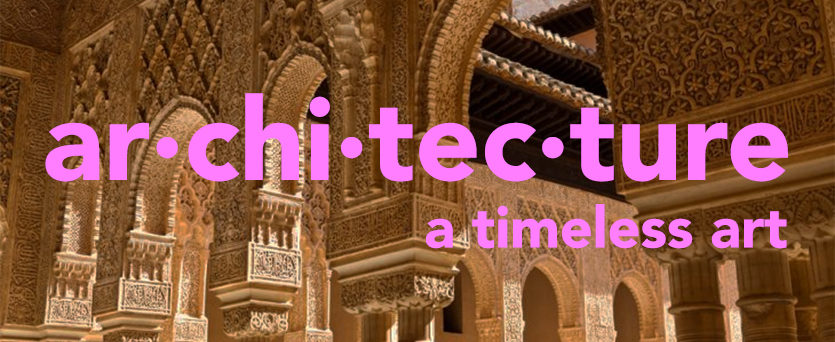An invention is typically coincident with its given name…
The Internet, a timepiece, a mailbox. Architecture is the exception to the rule because structures began existing before the very Latin-based word ‘architecture’ was first used. Of course, the ancient inhabitants of the Indus River Valley and northern Africa likely had a word that referenced artificially erected structures, but none quite as ubiquitous as the word ‘architecture’.
It is also not the oldest art. Singing and dancing preceded architecture because all one needs is her own body. Not every person feels compelled to sing and dance, however; if it can be helped, every person would prefer to be housed. And if she cannot benefit from a roof over her own head, she at minimum wants one over the head of her god. Worship has been integral in the development of humanity, and some of the most exquisite works of architecture have been inspired by or to service a religion. This art relates to every person on the planet, directly or indirectly, one way or another. It can be used to foster communities, to oppress them, to aid them, to harm them, to build them, and to replace them. In this way, the art of designing and building is an unfiltered reflection of what it means to act, think, and socialize: just as different colors as motifs evoke their respective emotions and moods, so do motifs in architecture. You will feel different in a space that has thick or thin columns, a high or low ceiling, a dark or naturally lit room.
The notion that truth is beauty—or that beauty is truth—is one to which many people subscribe. A Venus fly trap is fascinating, but no matter how exquisite or intriguing a piece of art made to represent the Venus fly trap may be, it will never be quite as cool as the real thing. The truth of 65 million years of non-random selection, not to mention the billions of years of preceding evolution, that led to a strange sentient-but-not plant will always be more beautiful than any piece of art. So, whenever you stand in awe in the presence of an architectural marvel, know that the beauty of it reflects the truth about how people live in that area. Architectural style informs you about how a certain people aim to live their lives. It informs you about their ideals, their morals, and their sense of community (all of which can be benevolent or pernicious).

Architecture teaches us the beauty in truth, even if that truth is absent. Because history from hundreds or thousands of years ago was not recorded as scrupulously or reliably as it is today, the stories behind how the most iconic buildings were erected are either rumored or unknown completely. And that makes them beautiful. We know there is a truth, but we don’t know what the truth is, and that inexplicably enhances the beauty of what it is we are witnessing. No one knowing is more interesting than everybody knowing.

